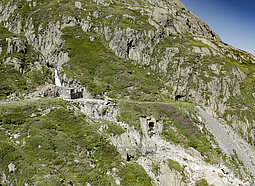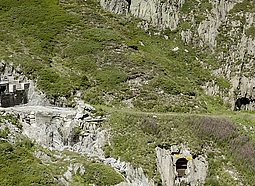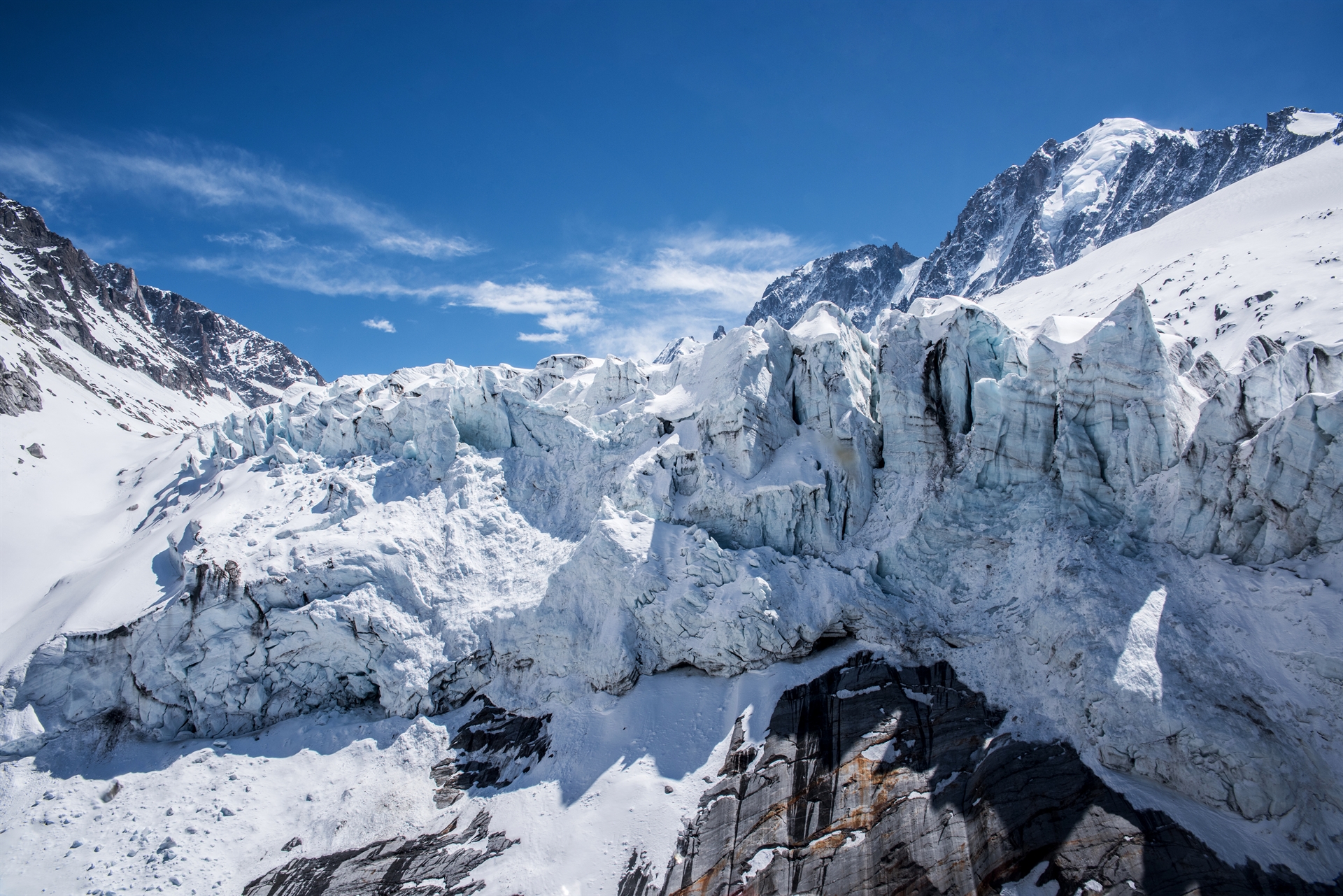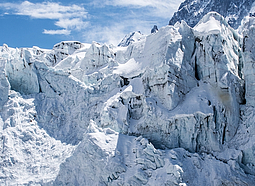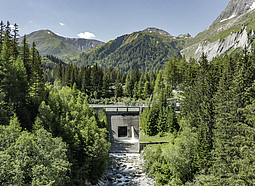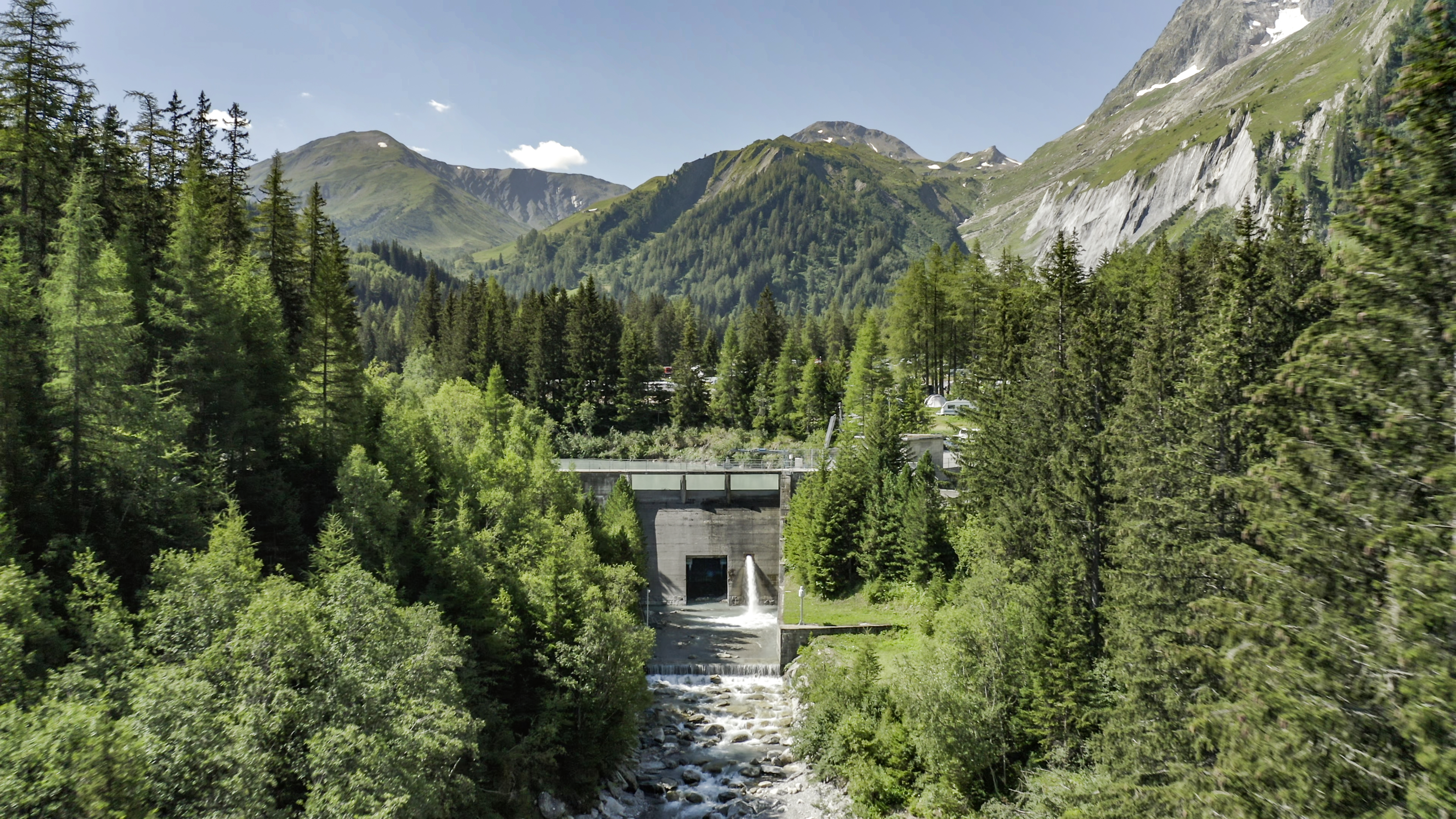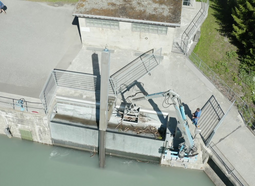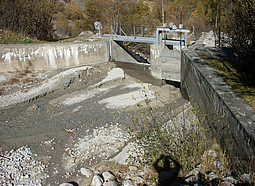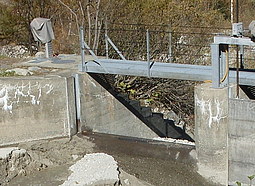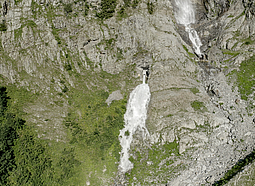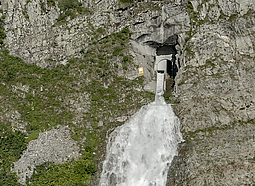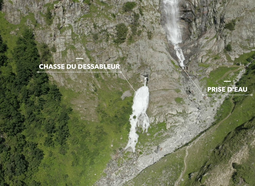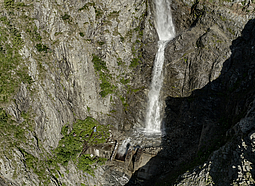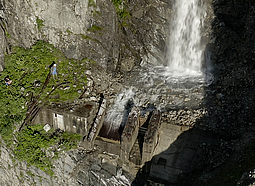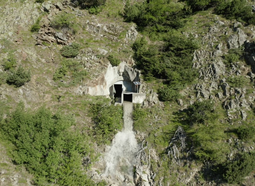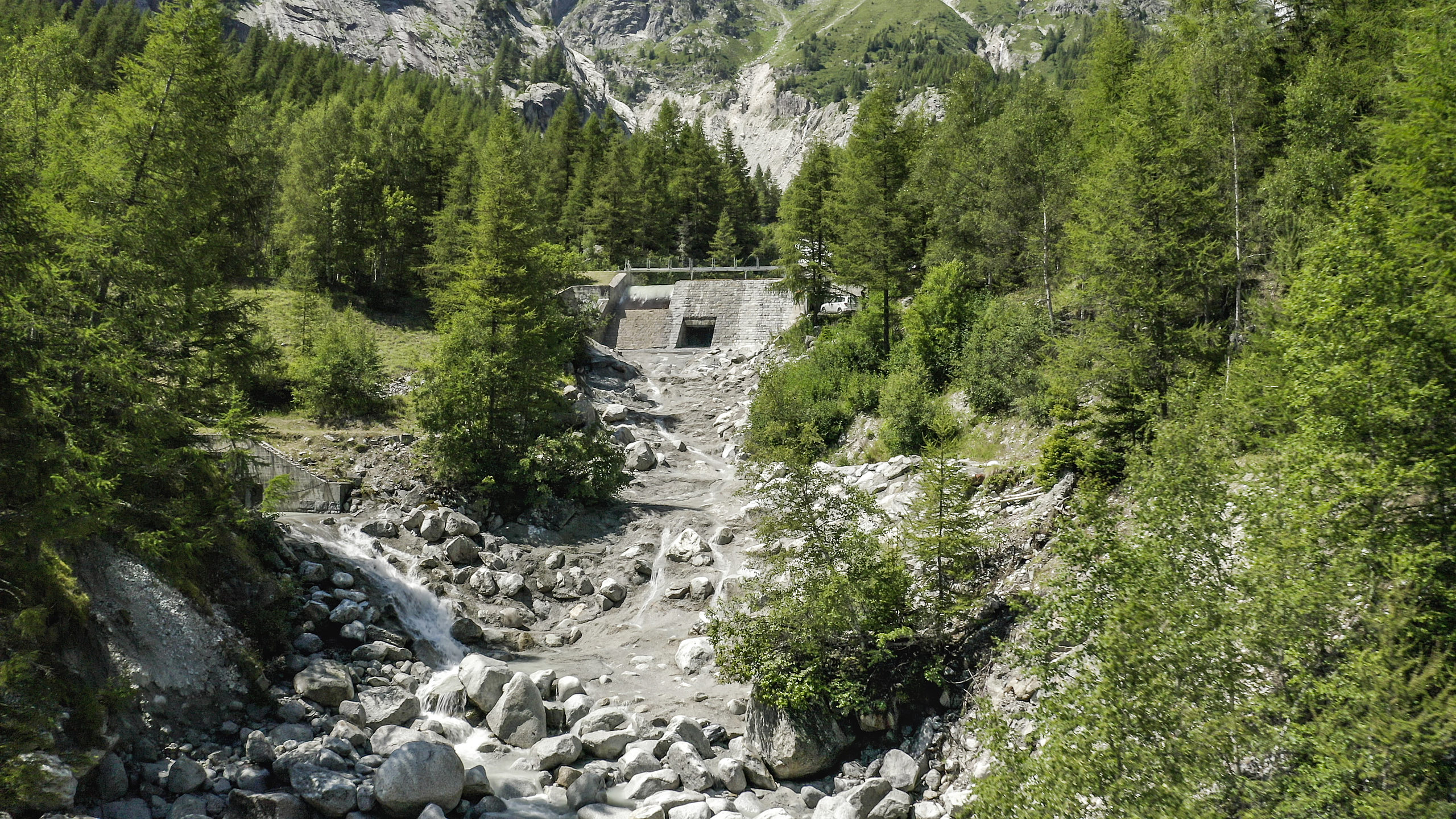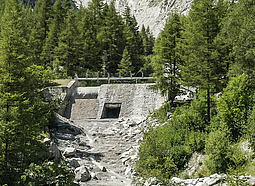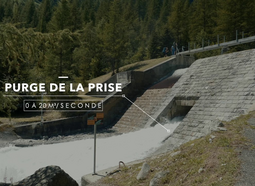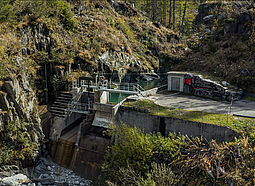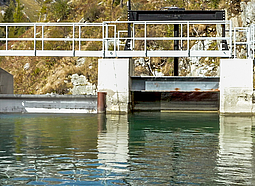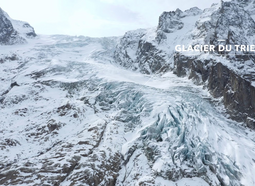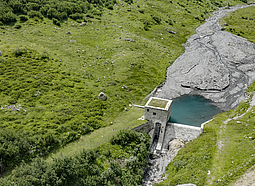Work in Winter 2020
Overhauling the watertightness of the basin, renewal of the anti-corrosion protection of the reinforced shaft, revision work on the head valve, ancillary works
After 47 years of operation, certain pieces of equipment required fairly heavy refurbishment in order to maintain a good level of infrastructure security.
It specifically involved the following work:
- Repairing the Esserts reservoir’s watertight bitumen seal
- Overhauling the bottom valve and the head valve of the reinforced shaft
- Repairing the anti-corrosion protection of the reinforced shaft at Esserts
This work required the implementation of specific logistics and ancillary works. It also required all water coming from the Emosson facility’s East collector to be halted, i.e. all water from Val Ferret.
The preparatory work took place in autumn 2019 before the arrival of snow and all production stopped to enable the work to be undertaken from 6 January to 24 April 2020, which was the date planned for re-filling the basin, followed by the finishing works which ended on June 19, including the repair of the access road.
Repairing the Esserts reservoir’s watertight bitumen seal
The weather conditions during the first phase of the drilling and preparation around concrete structures were not always easy. Heavy snowfalls creating a high risk of avalanche and made access to the basin impossible for a week. However, the weather was much milder during the laying phase of the new coating, which was the most delicate aspect of this project. In the end, the conditions necessary for quality laying were present and the work inside the basin was completed on schedule.
REPAIRING THE ANTI-CORROSION PROTECTION OF THE REINFORCED SHAFT AT ESSERTS
The section upstream of the head valve and the inclined section have undergone complete treatment. But due to key constraints related to Covid-19, the horizontal section at the entrance of the Vallorcine power station did not undergo complete treatment and was postponed to February 2021.
Ultimately, the project was total success and on time despite complicated hydrological conditions (much more water than usual), an often critical avalanche situation and Covid-19, which disrupted the last month of works.

